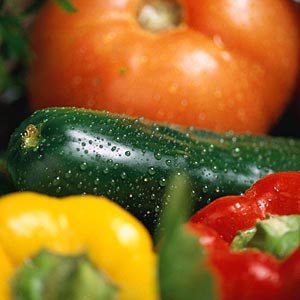 The New York Times, hot on the heels of my lycopene post, has a good column today about how some veggies nutrients, like lycopene, become more bioavailable once veggies are cooked. You win some, you lose some nutrient-wise however you prepare your veggies so the nutritional solution is to just eat lots of veggies in different ways and it should all even out.
The New York Times, hot on the heels of my lycopene post, has a good column today about how some veggies nutrients, like lycopene, become more bioavailable once veggies are cooked. You win some, you lose some nutrient-wise however you prepare your veggies so the nutritional solution is to just eat lots of veggies in different ways and it should all even out.Today's column makes up for one earlier this week about organic baby formulas. I thought the issue the baby formula story raised was important – that just because a food product is labeled organic doesn't mean that all the ingredients are the healthiest.
What bothered me was the statement "All infant formulas contain added sugars, which babies need to digest the proteins in cow’s milk or soy." Sugars have nothing to do with the digestion of proteins. Protein digestion is facilitated by enzymes, produced by the digestive tract, specific to the digestion of protein. Infant formulas are modeled to be as close to human milk as possible and contain sugars, just as human milk does, as a source of carbohydrate energy.
So don't be using that old "I need the sugar to digest my protein" excuse to justify those extra cookies.

 Spicy Cauliflower Chickpea Soup
Spicy Cauliflower Chickpea Soup



